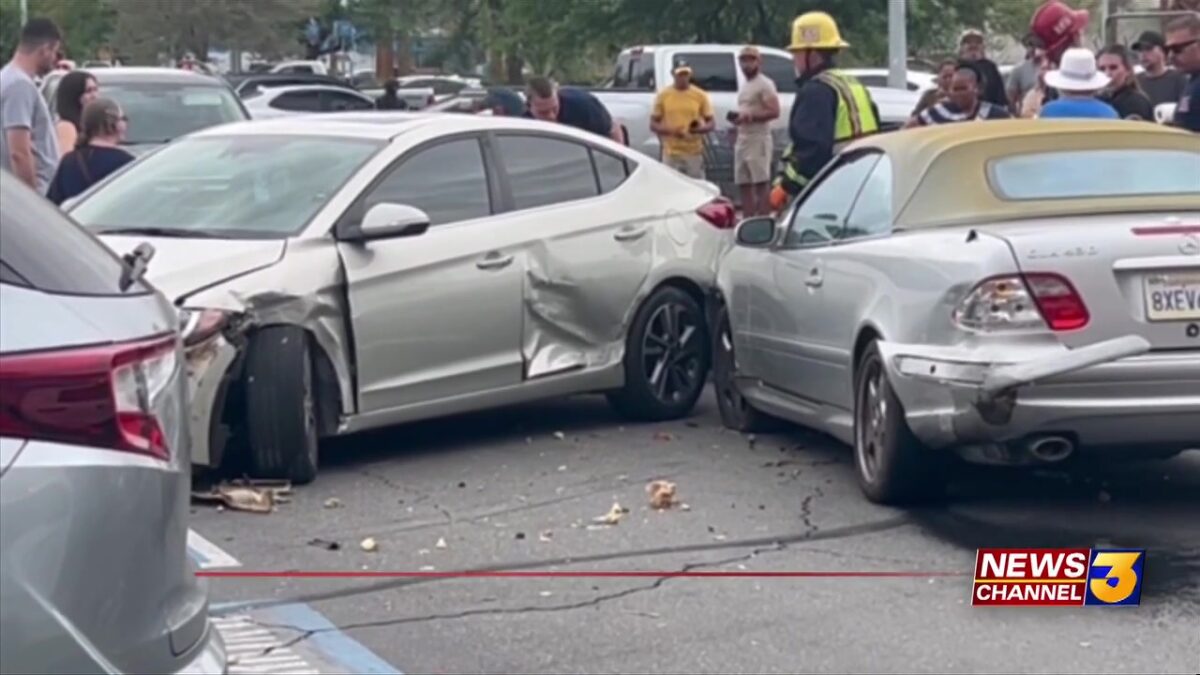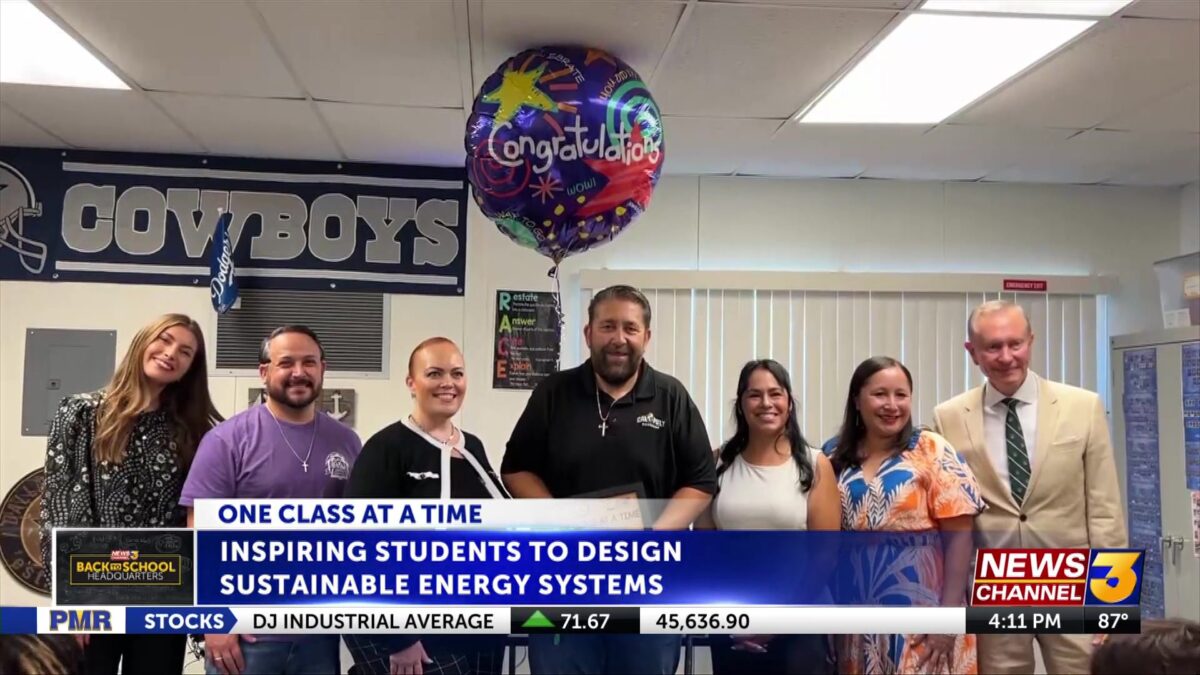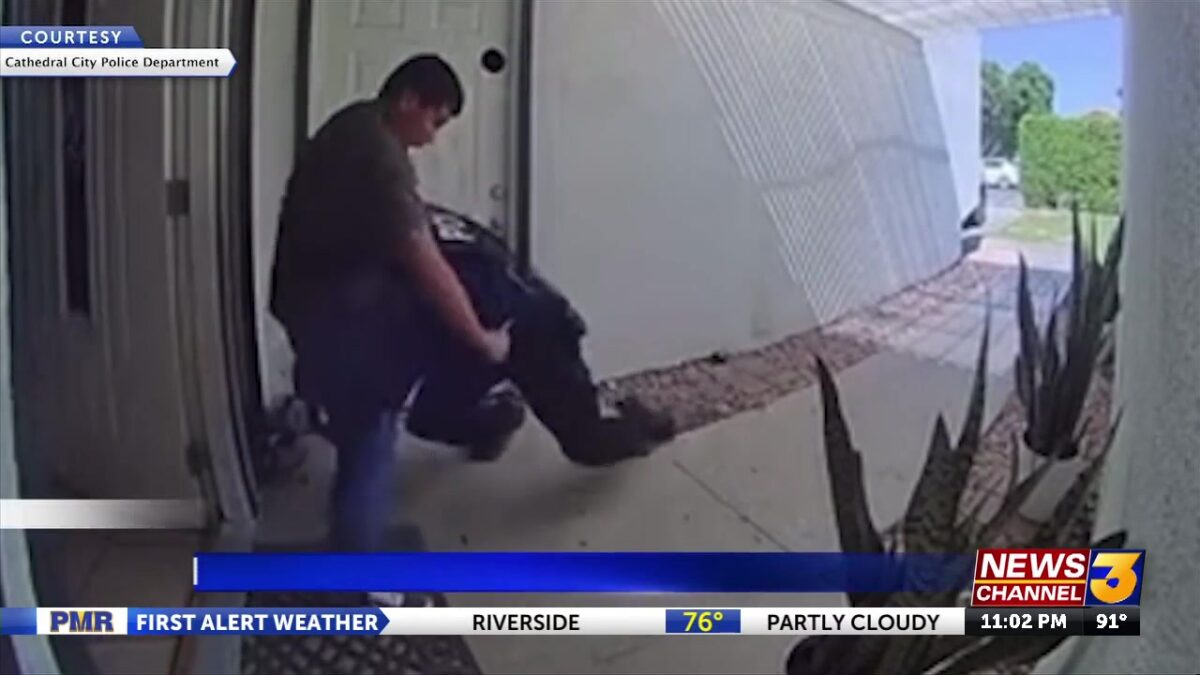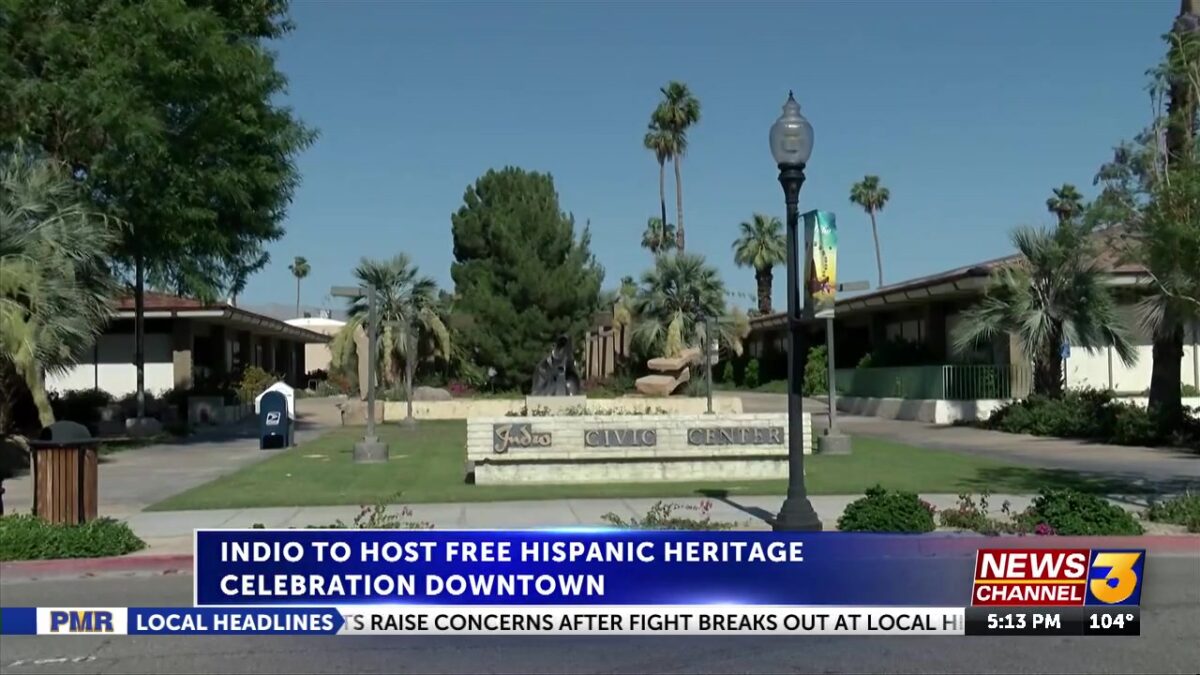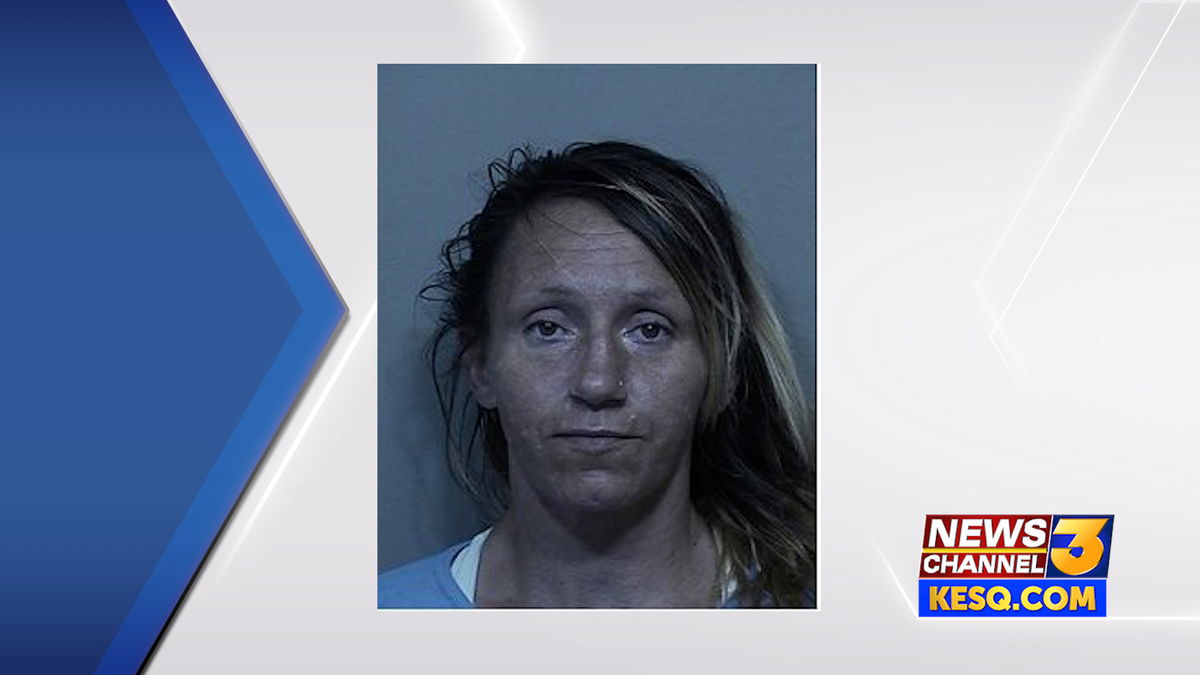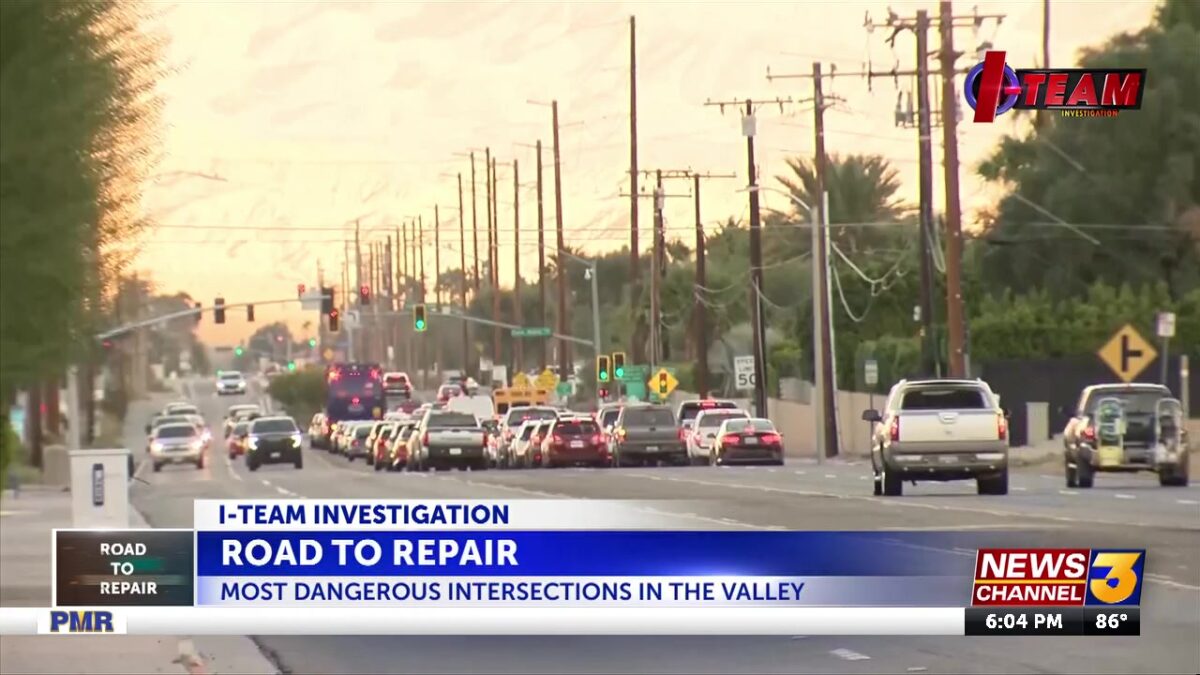Peter Daut
COACHELLA VALLEY, Calif. (KESQ) – Millions of Americans are expected to hit the road this Labor Day weekend, but the holiday continues to rank among the deadliest for car wrecks. So News Channel 3 wanted to know where in the Coachella Valley are you most likely to get into a crash, and what’s being done about it? News Channel 3’s Peter Daut looked at the data from every Valley city, and what he found surprised even the police.
From Palm Springs to Rancho Mirage to Indio, there have been dozens of crashes throughout the Valley in 2025, many of them serious or even deadly. But we wanted to know exactly which intersections have had the most crashes. So we broke down the numbers from all nine Valley cities since the start of 2025, and here are the top three most dangerous:
Coming in at Number Three: Palm Drive and Dillon Road in Desert Hot Springs. There have been at least 15 reported collisions, with one injury, and one death. That death happened just a few weeks ago, involving a motorcycle rider. Security video obtained by News Channel 3 showed the moment that rider slammed into an SUV as it was turning. The impact, throwing him several feet into the air. A memorial now marks the spot where he died. Just five days earlier at the same intersection, cameras captured another crash: A driver suddenly lost control, slamming into a gas pump and sparking an explosion. Police said the driver was not seriously hurt, but had been speeding while under the influence.
“What is it about this intersection that makes it so dangerous?” Daut asked Desert Hot Springs Police Cpl. Sean McGuire. He answered: “There’s a lot of open land all north, south, east, west, it’s very rural seeming. A lot of people have a tendency to believe that despite the lowered speed limit that they can just fly through here.”
McGuire said he is surprised to find out the intersection ranks as the Valley’s third most dangerous, but he knows crashes there have been an ongoing issue. “What needs to happen here to make this intersection safer?” Daut asked him. He answered: “Well the city’s actually putting into place a lot of changes. In particular, they’re doing sidewalks down the majority of this roadway. They’re putting in lighting, a lot of our collisions occur at night as well, so that lighting should help a lot in regards to people walking up and down. Possibly putting inlets for law enforcement, so we can conduct traffic enforcement even safer.”
Coming in at the Number Two most dangerous: Gene Autry Trail and Vista Chino in Palm Springs. Since the beginning of the year, there have been 20 reported crashes with eight injuries. Earlier this month, seven people were taken to the hospital with minor injuries after a four-car crash. Investigators said one of the drivers involved was intoxicated and charged with DUI. News Channel 3 has reported on the concerns of nearby residents, who say high-speed drivers and poor lighting along Vista Chino are to blame. “We’ve been talking about it for years about how dangerous this has gotten. It’s a lot more traffic than ever before coming through, and no lights. It’s completely dark. It’s actually risking your life to be in a car, let alone being on foot,” resident Jaymes Green said.
Palm Springs officials said that section of Vista Chino falls under Caltrans’ jurisdiction. We reached out to Caltrans to see what, if any, changes need to be made, and a spokesman responded that a study needs to be completed first.
And finally, coming in as the Number One most dangerous intersection in the Coachella Valley: Jackson Street and I-10 in Indio. Since January, there have been a whopping 27 reported crashes.
“I think people are impatient. We’re a culture of speed, and they want to get to their destination as quickly as possible,” Indio Police Lt. Andrew Leyva said. He also said nearby road construction on Avenue 44 has led to routine heavy congestion on Jackson street, especially during the afternoon. He said many drivers get tired of waiting to cross over the freeway, and so they roll through the intersection after the light has turned yellow. And that’s when a majority of the crashes tend to happen.
“Are you surprised this is the most dangerous intersection in the entire Coachella Valley?” Daut asked Leyva. He answered: “I am, especially when you showed me the other numbers compared to other agencies.”
Leyva said police know the intersection is a major problem, and that’s why officers are now stepping up enforcement. But he said drivers also need to do their part. “What we’re asking them is to change their behavior. Slowing down. Leave a little early to get to their destination, so they have enough time to get there on time.”
Construction on Avenue 44 is expected to be completed by next springs, so police are hopeful the intersection will be much safer by this time next year.
Other intersections in the Valley with a high number of crashes since the beginning of 2025: Ramon Road and Gene Autry Trail in Palm Springs (19 total collisions); Gene Autry Trail and Mesquite Ave/Dinah Shore Drive in Palm Springs (19 total collisions); Washington Street and Hwy 11 in La Quinta (11 total collisions).
Click here to follow the original article.
